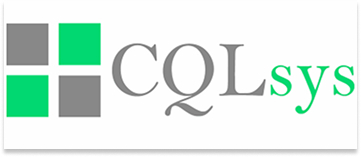Business industrial
How AI Is Transforming Patient Acquisition in Healthcare Marketing

Introduction
Patient acquisition has always been one of the toughest challenges in healthcare marketing. Unlike retail or e-commerce, healthcare is deeply personal patients aren’t just customers, they’re individuals making decisions in vulnerable moments about their health and wellbeing. Convincing them to choose one hospital, clinic, or provider over another requires trust, credibility, and the right message delivered at the right time.
Traditional strategies billboards, cold calls, mass emails, or even pay-per-click campaigns—have had limited success. They often target too broadly, wasting resources on people who may not need care anytime soon. At the same time, the cost of acquiring new patients has been rising, making efficiency more critical than ever.
Artificial intelligence (AI) is changing this picture entirely. By analyzing large volumes of data and applying machine learning to spot patterns, AI allows healthcare providers to reach potential patients in smarter, more personalized, and cost-effective ways. The result? More qualified leads, higher conversion rates, and a better patient experience from the very first touchpoint.
Let’s break down how AI is reshaping patient acquisition in healthcare marketing.
Why Patient Acquisition Needs Reinvention
Healthcare decisions are rarely impulsive. Patients research online, read reviews, compare providers, and consult family and friends before booking an appointment. A study by Google found that 77% of patients use search engines before booking a hospital appointment. This means digital visibility and engagement now play a massive role in patient acquisition.
The challenge? Standing out in a competitive digital landscape. Every provider is running ads, publishing blog posts, and trying to optimize for the same keywords. Without the precision of AI, much of this effort goes unnoticed or wasted.
AI helps bridge the gap by ensuring healthcare marketing is not just broad outreach but intelligent targeting. Instead of chasing everyone, AI pinpoints who is actively looking for care, what they need, and how best to reach them.
How AI Is Transforming Patient Acquisition in Healthcare Marketing
1. Hyper-Personalized Campaigns
One of the greatest advantages AI brings is personalization at scale. Traditional marketing might segment audiences by age, gender, or location. AI goes far deeper:
- It can identify intent signals such as search queries, browsing history, or past interactions.
- It can differentiate between a new mom searching for “pediatric check-ups near me” and a 55-year-old researching “knee replacement recovery time.”
- It delivers tailored messages to each group without overwhelming the marketing team.
For example, AI-driven platforms like Salesforce Health Cloud use machine learning to personalize patient journeys. This might mean sending appointment reminders at the most effective time of day or recommending relevant blog content based on the patient’s last query.
The result is a sense of being understood, which builds trust—a critical factor in healthcare decision-making.
2. Smarter Search & SEO Strategies
Search is often the first stop in a patient’s journey. Yet healthcare marketers frequently optimize for generic terms (“best hospital” or “family doctor”), leading to fierce competition and low ROI.
AI-powered SEO tools, such as Clearscope or SEMrush with AI assistants, can analyze patient language patterns and reveal long-tail, intent-driven keywords. Instead of targeting “cardiologist Phoenix,” AI might show that many patients search for “heart checkup cost in Phoenix” or “symptoms of blocked arteries specialist.”
By optimizing for these queries, providers capture patients right when they’re actively looking for care. AI also ensures content stays relevant, continuously adjusting recommendations as search behaviors evolve.
3. Predictive Analytics for Conversion
Not every lead is equal. Some people might fill out a form out of curiosity, while others are ready to book an appointment. Predictive analytics helps marketing teams identify the difference.
AI studies past patient data—appointment histories, referral sources, and even how long someone spends on a webpage. It then scores leads based on their likelihood of converting. This means healthcare marketers can:
- Prioritize high-value leads.
- Nurture “warm” leads with targeted content.
- Avoid wasting time on low-probability prospects.
For example, an urgent care center using predictive models might discover that patients searching “ER wait times” at night are 70% more likely to book within 24 hours. The clinic can then run targeted after-hours ads or chatbot prompts to capture these patients quickly.
4. Chatbots and Virtual Assistants
One of the most visible ways AI is transforming patient acquisition is through chatbots. These AI-powered assistants act like digital front desks, available 24/7.
They can:
- Answer common FAQs (“Do you accept my insurance?”).
- Schedule appointments instantly.
- Guide patients to the right department.
Beyond convenience, chatbots reduce drop-offs. Patients who can’t reach a receptionist or wait on hold often give up. A bot that responds instantly keeps them engaged and moves them closer to booking.
Some hospitals even integrate chatbots with EHRs (Electronic Health Records), allowing returning patients to get personalized reminders or test result updates.
5. Data-Driven Reputation Management
A provider’s reputation is one of the strongest factors in patient acquisition. Surveys show that 90% of patients read online reviews before booking care.
AI-driven sentiment analysis tools scan reviews, social media posts, and patient feedback in real time. They detect trends—like recurring complaints about wait times or praise for bedside manner—and alert marketing teams.
This allows clinics to:
- Address negative feedback quickly.
- Amplify positive testimonials in campaigns.
- Adjust internal processes to improve patient experience.
By actively managing reputation with AI, healthcare providers build the trust that drives acquisition.
6. Cost Efficiency and ROI
Patient acquisition is expensive—sometimes costing hundreds of dollars per patient. AI helps reduce these costs by eliminating waste:
- Campaigns are targeted to high-intent patients.
- Ad spend is allocated to the most effective channels.
- Automation reduces manual workload.
For example, a dental clinic that previously spent broadly on Facebook ads might, with AI insights, discover that 70% of conversions come from search ads targeting “teeth whitening near me.” They can then shift budget accordingly, doubling ROI without increasing total spend.
7. Ethical Considerations and Compliance
While AI offers immense potential, healthcare marketing must tread carefully. Privacy regulations like HIPAA in the U.S. or GDPR in Europe limit how patient data can be collected and used.
Marketers must ensure AI tools respect these boundaries. This includes:
- Avoiding use of identifiable patient health data without consent.
- Ensuring transparency about how data is analyzed.
- Using anonymized datasets where possible.
Responsible AI use is not just a compliance issue it’s a trust issue. Patients will only engage with providers they believe protect their data.
The Future of AI in Patient Acquisition
We’re still at the early stages of AI adoption in healthcare marketing. Future developments may include:
- Voice search optimization: As more patients use Alexa or Siri for health questions.
- AI video personalization: Automated video messages tailored to patient concerns.
- Predictive scheduling: AI predicting when patients are most likely to cancel and offering rescheduling prompts in advance.
Healthcare providers that embrace these tools early will gain a competitive edge not just in acquiring patients but in building relationships that last.
Final Thoughts
AI isn’t just a shiny tech buzzword it’s a powerful shift in how healthcare marketing works. By making outreach more personalized, predictive, and efficient, AI empowers providers to attract patients more effectively while improving the overall patient journey.
The hospitals and clinics that adopt AI today won’t just see lower acquisition costs they’ll be better positioned to build trust and long-term loyalty in a digital-first world.
The real question is: will you be one of the providers leading the charge, or will you be playing catch-up when AI becomes the industry standard?
Business industrial
Differentiating Shared Services vs. BPO: What Businesses Need to Know

Introduction
As companies grow, so do their operational demands. Managing finance, HR, IT, customer service, and administrative tasks becomes more complex and costly. To operate more efficiently, organizations often explore support models like Shared Services and Business Process Outsourcing (BPO).
These two models might seem similar, but they serve different purposes—and choosing the right one can significantly impact a company’s costs, productivity, and long-term growth. In this blog, we break down the key differences between shared services vs. BPO, helping your business make the right decision. Companies around the world rely on trusted outsourcing partners like SixEleven BPO to improve efficiency while lowering operational costs.
What Are Shared Services?
A shared services model centralizes internal business functions within the company. Instead of each department or branch handling tasks separately, a dedicated internal team supports the entire organization from one location.
For example, a corporation might establish a Shared Services Center (SSC) for:
- HR administration
- Payroll and timekeeping
- Finance and accounting
- Procurement
- IT support
- Data management
Key Characteristics of Shared Services
- Owned and operated by the company: The business manages the team, processes, and infrastructure.
- Focus on standardization: Shared services optimize workflows across departments to reduce duplication and errors.
- Internal cost-savings model: By centralizing teams, companies reduce operational expenses compared to having separate teams in each department.
- Best for large enterprises: Shared services are ideal for organizations with high-volume, repetitive processes.
Advantages of Shared Services
- More control over operations
- Standardized internal processes
- Better data governance
- Closer alignment with company culture
Limitations of Shared Services
- High setup cost
- Requires large headcount
- Limited scalability
- Still dependent on internal hiring and management
- Not ideal for small and medium enterprises (SMEs)
What Is Business Process Outsourcing (BPO)?

BPO involves hiring an external company to handle specific tasks or entire business functions. Instead of building an internal department, businesses outsource their operations to specialized service providers, often located offshore.
Popular BPO solutions include:
- Customer service & technical support
- Appointment scheduling
- Sales & lead generation
- Data entry & back-office processing
- Finance, accounting & payroll
- Content moderation
- Healthcare support
- IT helpdesk services
Organizations partner with leading outsourcing firms like SixEleven BPO to reduce costs, access trained talent, and ensure 24/7 efficiency.
Key Characteristics of BPO
- Operated by an external provider: The outsourcing company is responsible for hiring, training, and managing the team.
- Flexible and scalable: Businesses can scale up or down quickly depending on demand.
- Cost-efficient: Offshore outsourcing can save companies 60–70% in labor and operational costs.
- Focus on quality and expertise: BPO providers specialize in the tasks they support, offering higher efficiency and performance.
Advantages of BPO
- Lower operational costs
- Access to global talent
- 24/7 support availability
- Fast deployment and team expansion
- No infrastructure or HR burden
- Professional management and better productivity
Limitations of BPO
- Requires communication alignment
- Needs clear documentation and expectations
- Cultural differences (minimal when outsourcing to the Philippines)
Shared Services vs. BPO: Key Differences
1. Ownership and Control
- Shared Services: Operated internally.
- BPO: Outsourced to a third-party provider.
2. Cost Structure
- Shared Services: Lower cost than multiple in-house teams but still expensive to maintain.
- BPO: Highest cost savings—offshore outsourcing reduces expenses by up to 70%.
3. Scalability
- Shared Services: Limited, depends on internal hiring and budget.
- BPO: Highly scalable with fast team expansion.
4. Expertise
- Shared Services: Generalized, company-trained teams.
- BPO: Specialized teams with industry-specific experience.
5. Setup Requirements
- Shared Services: Requires office space, technology, HR, and management.
- BPO: No setup needed provider already has teams, systems, and infrastructure.
6. Best Suited For
- Shared Services: Multinational enterprises with high-volume internal processes.
- BPO: Businesses of all sizes, especially those seeking cost savings and efficiency.
Which Model Is Right for Your Business?
Both models offer strong benefits, but the best choice depends on your business goals, budget, and long-term plans.
Choose Shared Services If:
- You want full internal control
- You’re a large enterprise with extensive internal processes
- Budget is not a major concern
- You want to standardize internal workflows
Choose BPO If:
- You want to drastically reduce costs
- You need fast scalability
- You want to free your internal team from time-consuming tasks
- You need trained professionals instantly
- You require 24/7 support
- You want to focus on core business growth
Why Many Companies Prefer BPO Today
Modern businesses prioritize flexibility, speed, and cost-effectiveness—areas where outsourcing excels. BPO providers like SixEleven BPO deliver trained teams, industry expertise, and customized workflows without the heavy investment required for shared services.
Companies benefit from:
- Lower labor costs
- Ready-to-go trained teams
- Faster delivery times
- Improved customer satisfaction
- Stronger operational performance
For many organizations, outsourcing is not just a cost-saving decision—it is a strategic advantage.
Challenges and Considerations
1. Shared Services Challenges
- High initial investment in infrastructure and staff
- Limited flexibility compared to outsourcing
- Dependence on internal resources for technology and expertise
2. BPO Challenges
- Less direct control over processes
- Potential communication and cultural barriers in offshore BPO
- Risk of data security and compliance issues
- Dependence on service-level agreements for quality assurance
Factors Businesses Should Consider When Choosing Between Shared Services and BPO
- Core vs. Non-Core Activities: Identify which functions are essential to your business strategy. Core functions may benefit more from shared services, while non-core functions may be suitable for BPO.
- Cost vs. Long-Term Investment: Evaluate whether your organization can afford the initial investment for shared services or if immediate cost savings through BPO are more strategic.
- Control Requirements: Determine the level of control your organization needs over processes. Shared services provide more control, while BPO involves reliance on external providers.
- Scalability Needs: If rapid growth or seasonal fluctuations are expected, BPO offers more scalable solutions.
- Expertise and Technology Access: Consider whether your organization has the internal expertise and technology to manage processes efficiently or if an external provider can deliver better results.
- Risk and Compliance: Evaluate operational, legal, and security risks associated with outsourcing versus maintaining an internal shared services model.
Conclusion
Understanding the differences between shared services and BPO is essential for businesses aiming to improve efficiency, reduce costs, and enhance overall operations. Shared services provide centralized, internally managed processes with long-term control and consistency, while BPO offers flexibility, access to specialized expertise, and potential cost savings through external providers. Businesses should assess their core activities, scalability needs, control preferences, and risk tolerance before making a decision. By carefully considering these factors, organizations can select the right model to drive efficiency, support growth, and achieve strategic goals.
Final Thoughts
Shared services and BPO both play important roles in business operations, but they serve different needs. Shared services focus on internal centralization, while BPO offers external expertise, scalability, and significant cost savings.
Companies looking for efficiency, flexibility, and rapid growth often choose outsourcing partners like SixEleven BPO to handle customer service, back-office, sales, and support tasks. With the right outsourcing strategy, businesses can enhance performance, reduce costs, and stay competitive in today’s fast-changing marketplace.
More: Establish your brand effortlessly with LgoConnects virtual office BGC offering premium business identity without long-term rent or overhead expenses.
Business industrial
Best Solar Panels for Australian Homes

Introduction
Investing in solar energy is one of the most effective ways Australian homeowners can decrease electricity bills, improve energy independence, and contribute to a greener future. With so many brands, technologies, and installation choices available, understanding how to choose suitable solar panels is essential.
At Electrical Masters, we follow Australian solar rules and Clean Energy Council (CEC) standards to ensure every household obtains a system that’s safe, durable, and built for long-term performance. When customers search for the best solar panels, they are usually looking for things that offer durability, efficiency, and long warranties—qualities which match perfectly with what our team provides.
Why Solar Energy Is Beneficial for Australian Homes
Solar energy provides multiple advantages for homeowners, making it a popular choice across Australia.
- Lower Electricity Bills: Solar panels generate free electricity from sunlight, reducing reliance on the grid. Homeowners can save hundreds or even thousands of dollars annually.
- Energy Independence: Generating your own electricity reduces dependence on fluctuating energy prices. With battery storage, you can even power your home during peak times or outages.
- Environmental Impact: Solar energy reduces greenhouse gas emissions, helping combat climate change and promoting a sustainable future.
- Property Value: Homes with solar panels often have higher resale value and attract environmentally conscious buyers.
- Government Incentives: Australian homeowners can benefit from federal and state rebates, making solar energy more affordable.
These benefits make investing in solar a long-term solution that pays off financially and environmentally.
Evaluating the Quality of Solar Panels
Selecting high-quality solar panels requires more than just comparing price tags. It needs evaluate efficiency, durability, certification, installation quality, and long-term return on investment.
Get your free solar consultation today with Electrical Masters and get free quote!
Power Efficiency and System Performance
Solar panel performance controls how much sunlight can be turned into usable energy. High-efficiency panels can be used for roofs with limited area or for families with greater energy demands. Technological developments like as half-cut cells, mono crystal designs, and advanced anti-reflective coatings improve maximise performance throughout the year.
Long-Lasting Panels for Australian Climates
Australia’s the environment may be difficult on solar equipment. Panels must withstand:
- Extreme UV exposure
- High summer temperatures
- Heavy rainfall
- Coast saline fog
- Strong winds and storms
Quality panels include solid frames, tempered glass. Choosing solid equipment ensures less maintenance difficulties and consistent energy production.
Selecting the Ideal Solar Panels for Your Home
Electrical Masters values safety, consistency, and long-term performance. We suggest adopting solar systems that include:
- CEC-approved panels and inverters
- Strong warranties with local manufacturer support
- High efficiency and strong tolerance to temperature
- Guaranteed real-world performance in Australian conditions
- Installations completed by authorised professionals
Our skilled team helps you through the entire process from consultation to continuing assistance, making solar installation straightforward, transparent, and stress-free.
How to Choose the Right Solar Panels
Selecting the right solar panels involves evaluating factors such as efficiency, durability, warranty, and price. Here’s what Australian homeowners should consider:
1. Efficiency
Solar panel efficiency measures how effectively panels convert sunlight into electricity. Higher efficiency panels produce more energy in limited roof space, which is important for smaller homes. Look for panels with efficiency ratings above 18% for optimal performance.
2. Durability and Build Quality
Durable panels withstand harsh weather conditions, including high temperatures, heavy rain, and strong winds. Panels made with high-quality materials last longer and maintain performance over time.
3. Warranties and Reliability
A strong warranty indicates the manufacturer’s confidence in their product. Most reliable panels offer 25-year performance guarantees and 10-12 years on product quality. Ensure your system comes with a comprehensive warranty to protect your investment.
4. Technology Type
There are different types of solar panels available:
- Monocrystalline: High efficiency and space-saving, ideal for limited roof areas.
- Polycrystalline: More affordable, slightly lower efficiency, suitable for larger roofs.
- Thin-Film: Lightweight and flexible, but less efficient than crystalline panels.
Choosing the right technology depends on roof space, budget, and energy needs.
5. Brand Reputation
Select solar panels from trusted brands with proven performance in Australia. Reliable brands have good after-sales support and quality assurance, which ensures peace of mind.
The Importance of Proper Installation
Even the best solar panels cannot perform optimally without professional installation. Electrical Masters follows Clean Energy Council (CEC) standards to ensure safe and effective setups.
- Correct Panel Orientation: Panels should face north in Australia for maximum sunlight exposure.
- Optimal Tilt Angle: Proper angles improve energy output throughout the year.
- High-Quality Wiring: Safe and efficient electrical connections prevent energy loss and hazards.
- Battery Integration: For homes using storage systems, professional installation ensures compatibility and reliability.
Professional installation not only maximizes efficiency but also protects your warranty and investment.
Maintenance Tips for Long-Term Performance
Maintaining solar panels is simple but essential to ensure peak performance.
- Regular Cleaning: Dust, leaves, and debris can reduce efficiency. Clean panels with water and a soft cloth.
- Visual Inspections: Check for cracks, loose connections, or shading issues.
- Monitoring Output: Use energy monitoring apps or systems to track performance and detect any problems early.
- Professional Check-Ups: Schedule periodic inspections with certified technicians to maintain warranty compliance and ensure safety.
Following these maintenance tips ensures your panels continue generating maximum energy for years.
Boosting Energy Output and Reducing Costs
Choosing the right solar panels is simply the first step. Homeowners can further maximise savings and efficiency by:
- Adding battery storage: Store extra electricity for usage at night or during grid failures
- Monitoring system performance: Use apps and smart meters to track energy output and consumption
- Routine maintenance: Inspect and clean panels periodically to maintain optimal performance.
A well-designed system not only saves power bills but also boosts property value and adds to sustainability over time. Call Electrical Masters now to learn how our solar solutions can save you money every month!
Boosting Energy Output and Reducing Costs
Choosing the right solar panels is simply the first step. Homeowners can further maximise savings and efficiency by:
- Adding battery storage: Store extra electricity for usage at night or during grid failures
- Monitoring system performance: Use apps and smart meters to track energy output and consumption
- Routine maintenance: Inspect and clean panels periodically to maintain optimal performance.
A well-designed system not only saves power bills but also boosts property value and adds to sustainability over time. Call Electrical Masters now to learn how our solar solutions can save you money every month!
Choosing a Solar Installer You Can Trust
Selecting a reputable solar installer is as important as choosing the panels themselves. Electrical Masters follows all Australian solar rules and CEC standards to deliver safe and high-quality installations. A reliable installer provides:
- Free consultations and site assessments
- Transparent pricing and system recommendations
- Assistance with government rebates and incentives
- Professional installation, testing, and maintenance support
Working with certified installers ensures a hassle-free experience and long-lasting system performance.
Financial Benefits of Investing in Solar Panels
Investing in solar panels is not just environmentally responsible—it also makes financial sense:
- Reduced Electricity Bills: Generate your own energy and pay less to the grid.
- Feed-in Tariffs: Sell excess electricity back to the grid for extra savings.
- Return on Investment: Solar panels often pay for themselves within 4-7 years, depending on usage and system size.
- Energy Security: Reduce exposure to rising electricity prices in the future.
These financial advantages make solar a smart, long-term investment for Australian homeowners.
Conclusion
Investing in solar panels is a long-term decision that brings financial savings, increased energy independence, and a good environmental impact. Choosing a reliable, efficient, and properly installed system ensures that you receive years of continuous performance. At Electrical Masters, we specialise in helping Australian households select the best solar panels, providing guidance, installation, and ongoing support to enhance your system’s efficiency and lifetime. By choosing trustworthy solar solutions, you can enjoy a sustainable and cost-effective energy future with confidence.
Frequently Asked Questions
Q1. Do solar panels work well in hot climates?
Yes, but high temperatures may decrease efficiency. This is why choosing panels with strong coefficients of heat is essential for Australian environments.
Q2. What size solar system should I install?
System size depends on your daily energy consumption, roof space, location, and whether you want to add a battery or future EV charging.
Q3. How do I maintain my solar panels?
Regular evaluations, routine cleaning, and performance evaluations help ensure your system performs at its best year-round.
Q4. Are all solar panels eligible for government rebates?
Only CEC-approved panels and installations performed by accredited professionals qualify for Small-scale Technology Certificates (STCs).
Business industrial
Reliable P11 Pipe Suppliers for Quality Pipes

Introduction
Finding the right pipe supplier is crucial for any construction or industrial project. P11 pipes, known for their strength and durability, are widely used in high-temperature and high-pressure applications. Choosing reliable P11 pipe suppliers ensures that your project runs smoothly, with pipes that meet quality standards and perform well under demanding conditions. Whether you are in construction, manufacturing, or energy sectors, sourcing P11 pipes from trusted suppliers can save time, reduce costs, and improve safety.
What Are P11 Pipes?
P11 pipes are made from a low alloy steel that contains chromium and molybdenum. This combination gives the pipes excellent strength and heat resistance. P11 pipes are often used in boilers, pressure vessels, and high-temperature pipelines. They can withstand temperatures up to 550°C and are resistant to oxidation and corrosion, making them ideal for demanding industrial applications.
These pipes come in different forms, such as seamless or welded, and are available in various sizes to meet different project requirements. Their mechanical properties make them suitable for both structural and mechanical applications, providing reliability and longevity in service.
Why Choosing the Right P11 Pipe Supplier Matters
The quality of P11 pipes depends not only on the material but also on how they are manufactured and handled. Reliable P11 pipe suppliers ensure that the pipes meet international standards and specifications. Choosing a supplier with a reputation for quality reduces the risk of defects, which can lead to costly downtime or repairs.
Good suppliers also provide support in selecting the right type and size of pipes for your specific application. They can offer guidance on installation, maintenance, and compliance with safety standards. This ensures that your project meets all regulatory requirements and operates efficiently.
Applications of P11 Pipes

Image by: Yandex.com
P11 pipes are used in a variety of industries due to their strength and heat resistance. Some common applications include:
- Power Plants: P11 pipes are often used in boilers and steam pipelines because they can handle high temperatures and pressures.
- Oil and Gas Industry: These pipes are suitable for transporting hot fluids and gases in refineries and pipelines.
- Chemical Plants: P11 pipes resist corrosion and can handle harsh chemical environments.
- Industrial Manufacturing: They are used in machinery, heat exchangers, and other high-temperature equipment.
The versatility of P11 pipes makes them a preferred choice for engineers and project managers who need reliable and long-lasting piping solutions.
Benefits of Working with Trusted P11 Pipe Suppliers
Working with reputable P11 pipe suppliers offers several advantages:
- Quality Assurance: Suppliers with a good track record provide pipes that meet strict quality standards.
- Timely Delivery: Reliable suppliers ensure that pipes are delivered on schedule, reducing project delays.
- Technical Support: Experienced suppliers can offer guidance on choosing the right pipes and proper installation methods.
- Cost Efficiency: Trusted suppliers provide competitive prices without compromising on quality, saving money in the long run.
By partnering with the right supplier, companies can ensure their projects are safe, efficient, and cost-effective.
Tips for Choosing the Right P11 Pipe Supplier
When selecting a P11 pipe supplier, consider the following factors:
- Reputation and Experience: Choose suppliers with a proven track record in supplying P11 pipes to various industries.
- Quality Certifications: Ensure the supplier provides pipes that meet international standards like ASTM, ASME, or ISO.
- Range of Products: A supplier offering a wide range of sizes and types can meet different project needs.
- Customer Support: Good communication and technical support are essential for smooth transactions and project guidance.
- Delivery and Logistics: Check if the supplier can deliver pipes on time and provide proper handling and storage options.
Following these tips will help you avoid low-quality suppliers and ensure your project runs without interruptions.
Challenges in the P11 Pipe Market
While P11 pipes are widely used, sourcing them can sometimes be challenging. Price fluctuations, limited availability, and varying quality standards across suppliers can create difficulties. Choosing the wrong supplier may result in delays, defective products, and additional costs.
To overcome these challenges, it is important to build long-term relationships with trusted suppliers, check product certifications carefully, and plan your procurement strategy in advance. This ensures that your project receives high-quality pipes at the right time and price.
Future Trends in P11 Pipe Supply
The demand for P11 pipes is expected to grow as industries expand and modernize. New manufacturing technologies are improving the quality and performance of P11 pipes, making them even more reliable. Suppliers who invest in advanced production techniques, quality control, and customer service are likely to lead the market.
Sustainability is also becoming a key focus. Many suppliers are adopting eco-friendly practices in production and packaging, reducing the environmental impact of their operations. This is an important factor for companies looking to meet green standards and corporate responsibility goals.
Conclusion
P11 pipes play a critical role in industries that require high-temperature and high-pressure solutions. Choosing the right P11 pipe suppliers ensures that your project receives quality pipes, delivered on time, with the necessary support for installation and maintenance. Trusted suppliers provide assurance in terms of standards, durability, and performance, helping businesses save costs and avoid operational risks. As demand for durable and high-performance pipes grows, partnering with reliable P11 pipe suppliers is essential for any successful industrial or construction project.
-
Business2 years ago
Cybersecurity Consulting Company SequelNet Provides Critical IT Support Services to Medical Billing Firm, Medical Optimum
-
Business2 years ago
Team Communication Software Transforms Operations at Finance Innovate
-
Business3 years ago
Project Management Tool Transforms Long Island Business
-
Business2 years ago
How Alleviate Poverty Utilized IPPBX’s All-in-One Solution to Transform Lives in New York City
-
health3 years ago
Breast Cancer: The Imperative Role of Mammograms in Screening and Early Detection
-
Sports3 years ago
Unstoppable Collaboration: D.C.’s Citi Open and Silicon Valley Classic Unite to Propel Women’s Tennis to New Heights
-
Art /Entertainment3 years ago
Embracing Renewal: Sizdabedar Celebrations Unite Iranians in New York’s Eisenhower Park
-
Finance3 years ago
The Benefits of Starting a Side Hustle for Financial Freedom










































